This Persian charoset has toasted nuts, dried and fresh fruit, and warm fragrant spices. Serve in a bowl or as individual portions rolled into balls. This Passover charoset is the perfect addition to your holiday seder plate.
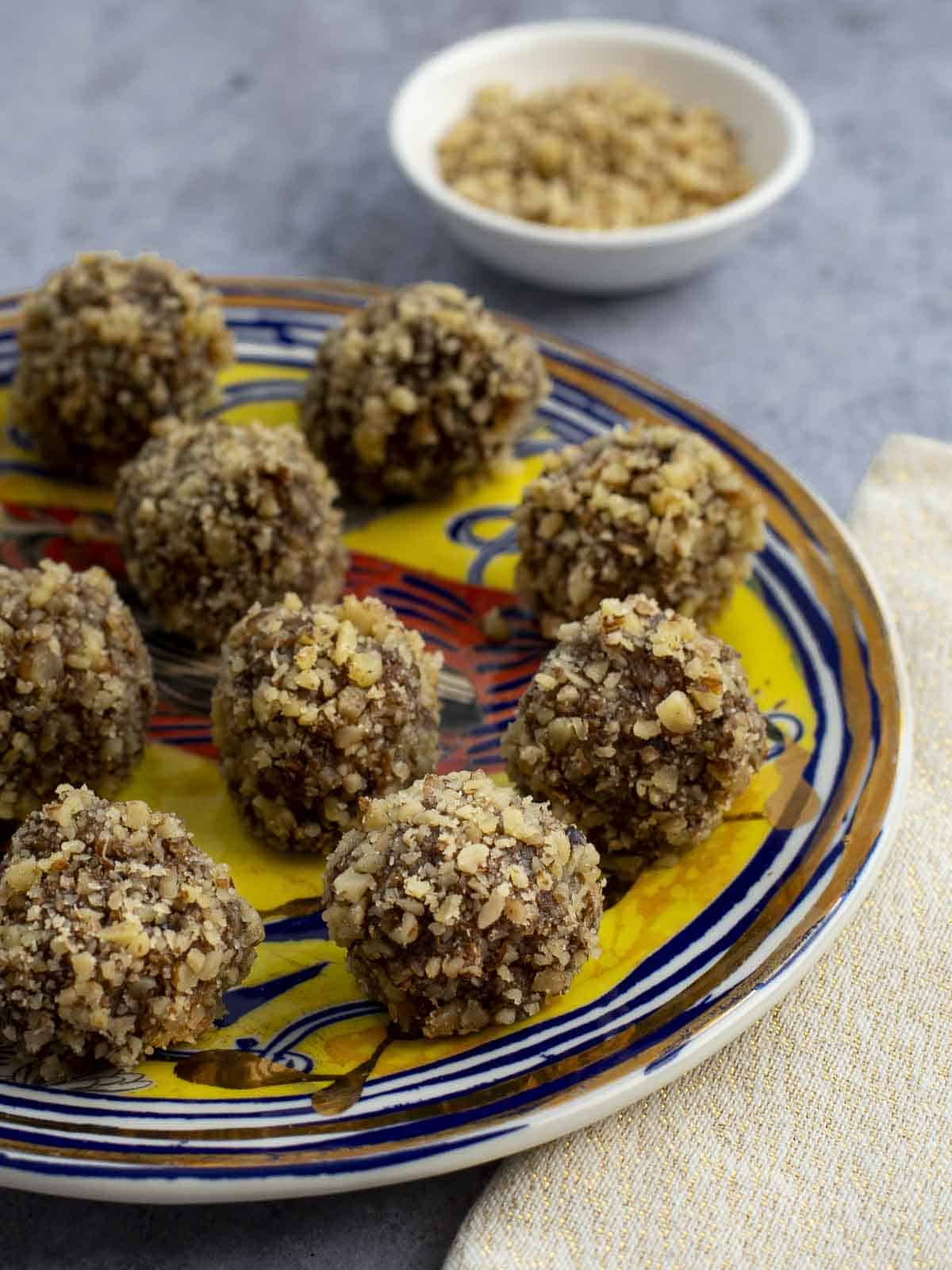
Charoset is usually spread on top of matzo, which is an unleavened cracker. The soft paste on top of crunchy matzo is a winning combination. For other matzo toppings, check out my Matzo Recipe Ideas for Passover.
Jump to:
What is Charoset?
Charoset (also spelled haroset) is a lovely combination of fruits, nuts, and spices made into a chunky spread. It's served for Passover, the Jewish springtime holiday. Charoset is a symbolic food which represents the mortar that Jewish slaves used to lay bricks during Egyptian times.
There are many varieties of haroset that vary from region to region. The ingredients change depending on availability and customs in different parts of the world.
For example, Apple Haroset is a popular Ashkenazi version that comes from Eastern Europe. It's commonly made with chopped apples, walnuts, cinnamon, and sweet wine.
Why You'll Want to Make This Persian Charoset Recipe:
- The dish is filled with flavorful ingredients popular in Persian cuisine such as pomegranate juice, pistachios, and cardamom.
- The fresh fruit creates a lighter and fluffier texture than most Sephardic recipes which use only dried fruit.
- It's a simpler recipe because the dried fruit is uncooked, as opposed to other versions which call for cooking dried fruit.
- It has the perfect balance of sweet and sour flavors.
This Iranian haroset recipe is from Joan Nathan’s cookbook King Solomon’s Table which explores Jewish food from around the world. The recipe is used with permission from the publisher and author.
I have adapted the recipe to use half the ingredients to make a smaller batch. I also added directions for presenting the dish rolled in balls which is common in many Sephardic households.
Ingredient Notes and Substitutions
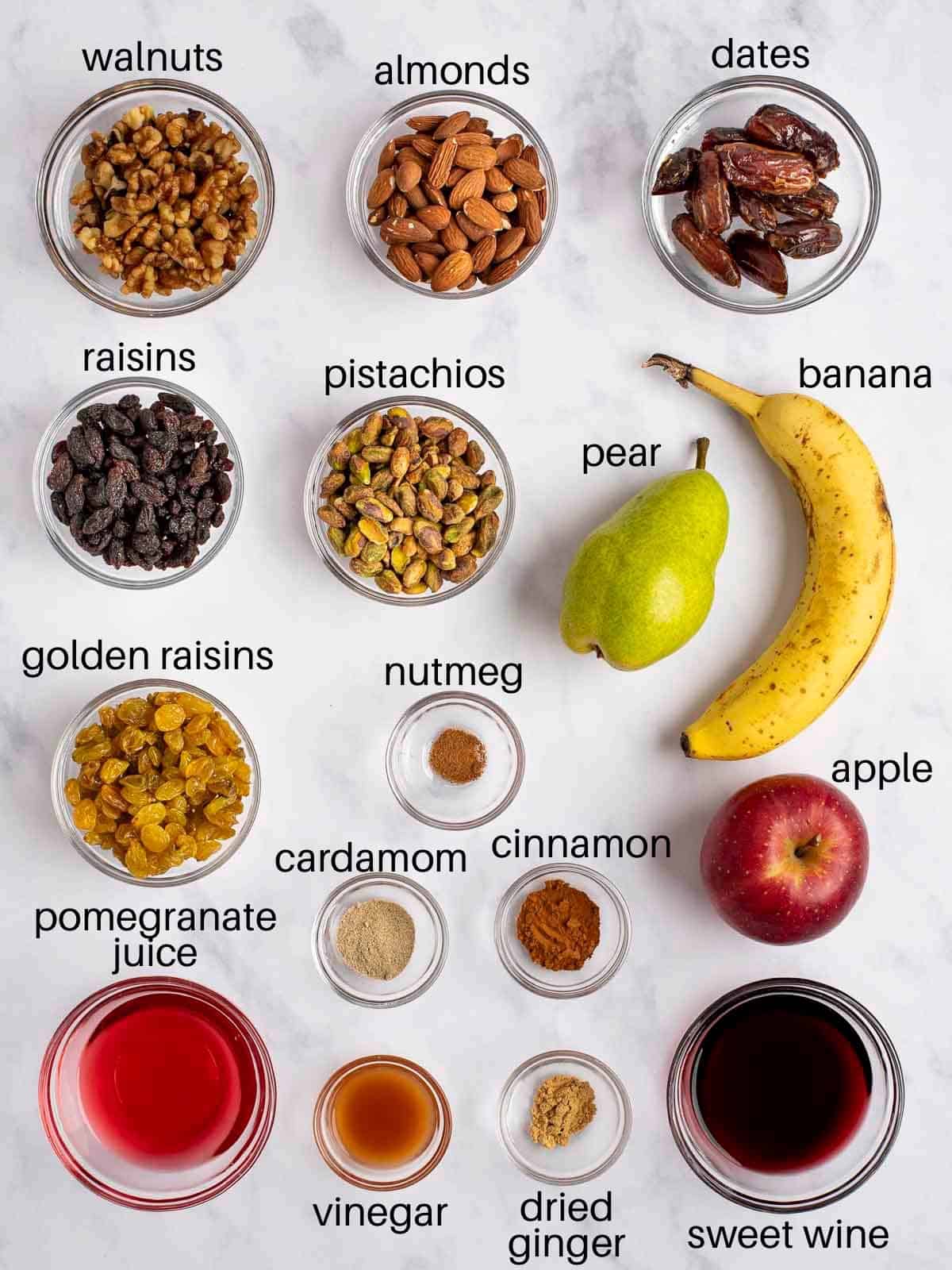
See the recipe card below for a complete ingredient list and measurements.
- Nuts - This dish tastes better if the nuts are roasted, but you can skip roasting to save time. You’ll need walnuts, almonds, and pistachios.
- Dried fruits - I use a mix of black and golden raisins as well as pitted dates.
- Fresh fruits - Apple, pear, and banana. If you don’t have a small apple or pear, then use half of a large one. Any type of apple will work. Don’t use more than the specified amount or the texture could be too soft to roll into balls.
- Spices - The spices of ground cinnamon, cardamom, ginger, and nutmeg add a wonderful fragrance and Persian taste to this haroset.
- Kosher wine - Use a sweet red wine like Manischewitz concord grape wine.
How to Make Charoset (Persian Style)
See the recipe card below for complete directions.

Step 1: Dried fruits, nuts, and spices
Pulse 1 cup of walnuts, and set aside for decoration. Add remaining nuts, dried fruits, and spices to the food processor and pulse until coarsely chopped.
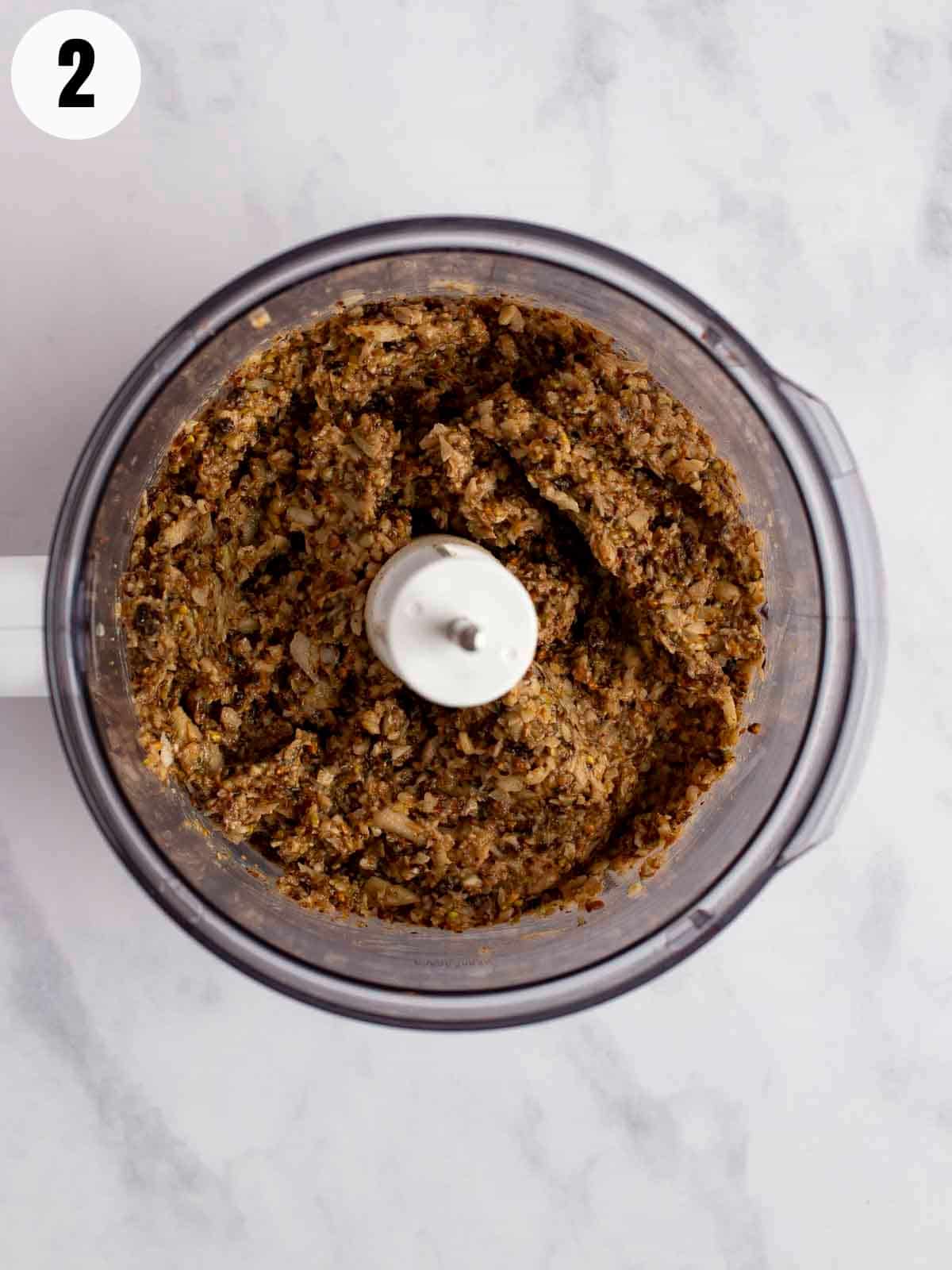
Step 2: Pulse fresh fruit
Add the apple, pear, and banana in with the chopped nuts and dried fruit, and pulse until coarsely chopped.
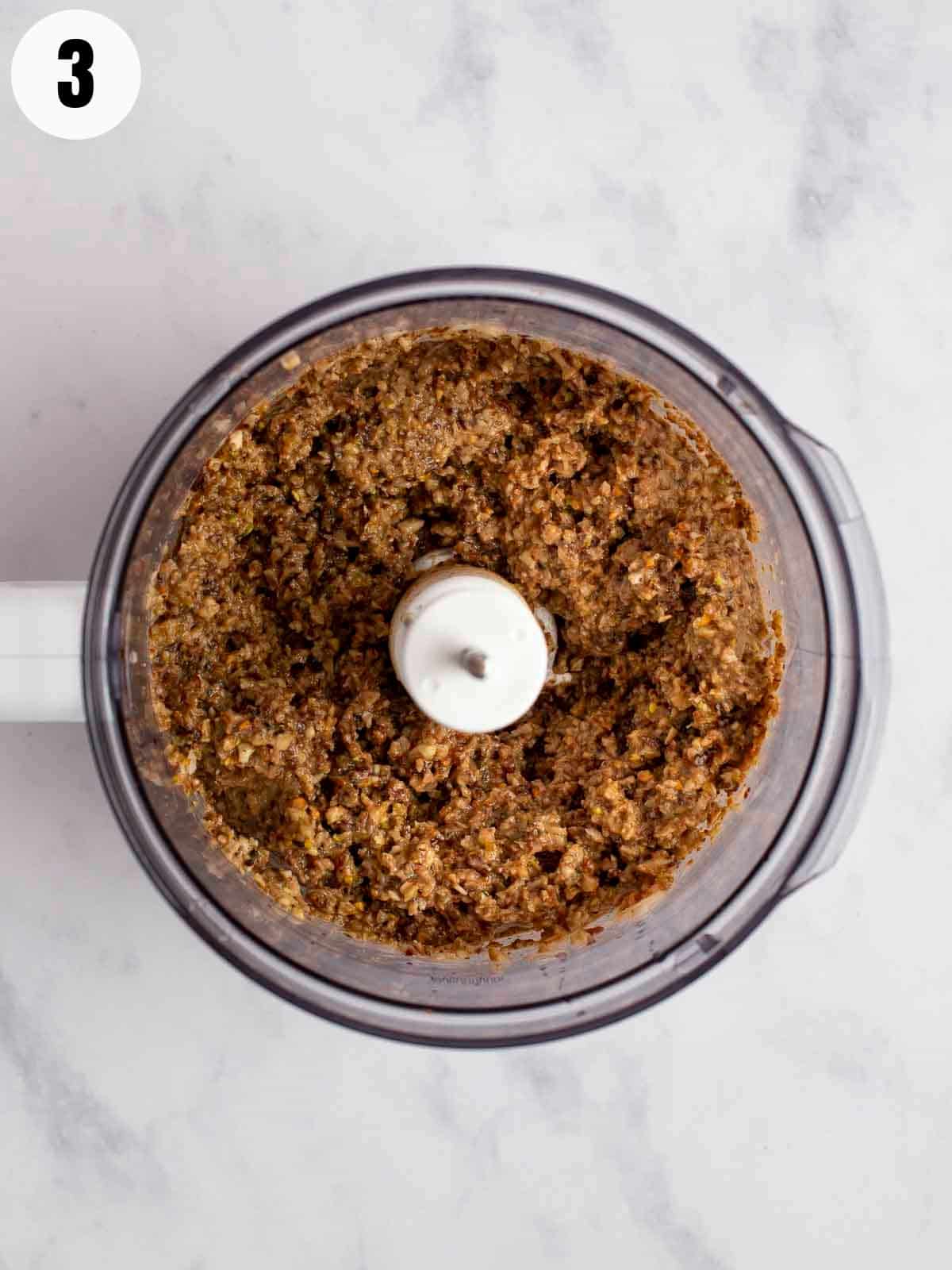
Step 3: Add liquid
Add vinegar, pomegranate juice, and wine to the food processor. Pulse again until the mixture comes together in a thick paste with tiny pieces.
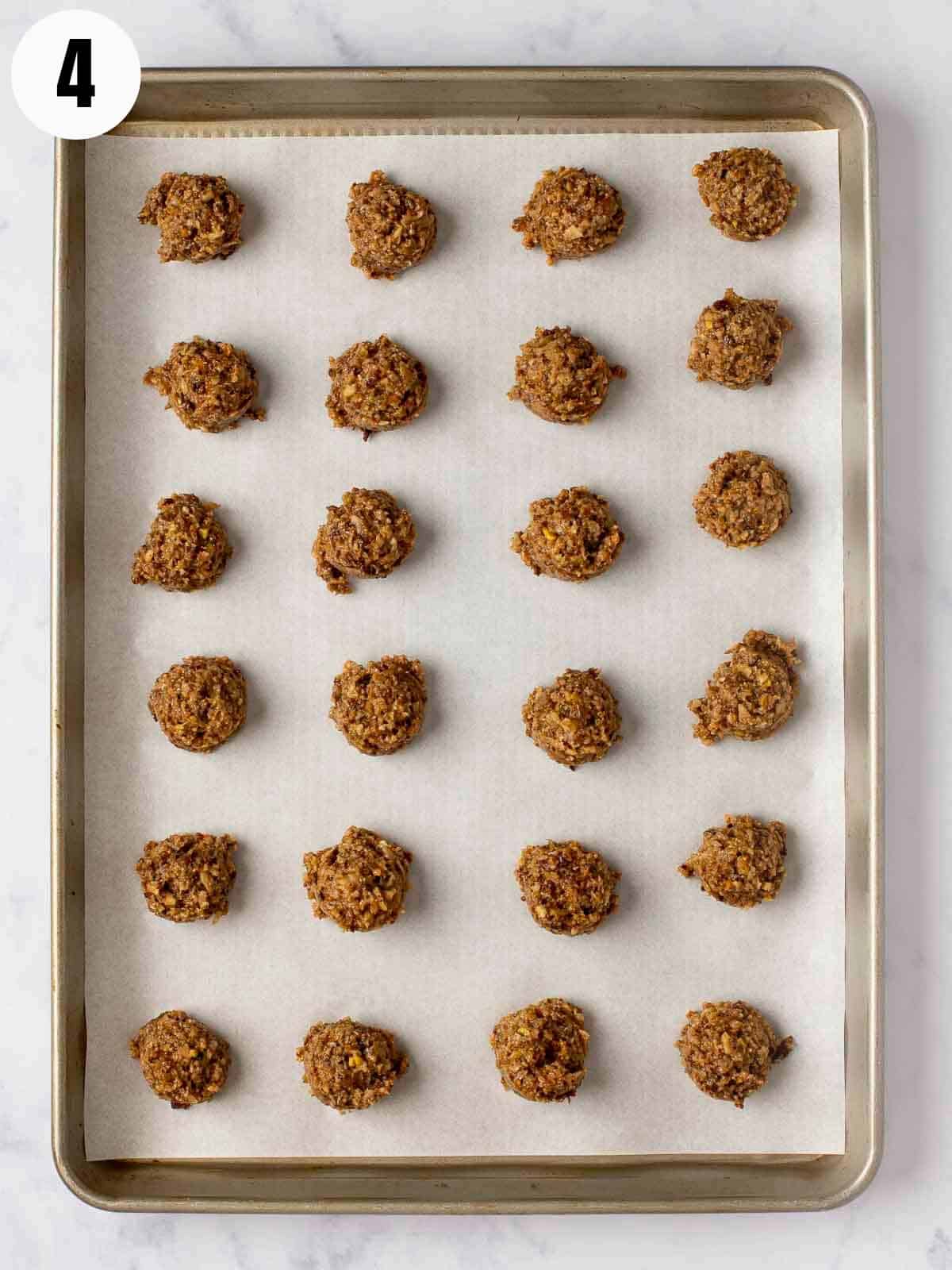
Step 4: Scoop
Scoop about 1 tablespoon of charoset and place on a baking sheet.

Step 5: Roll
Lightly wet your hands, and roll each scoop into a ball shape.
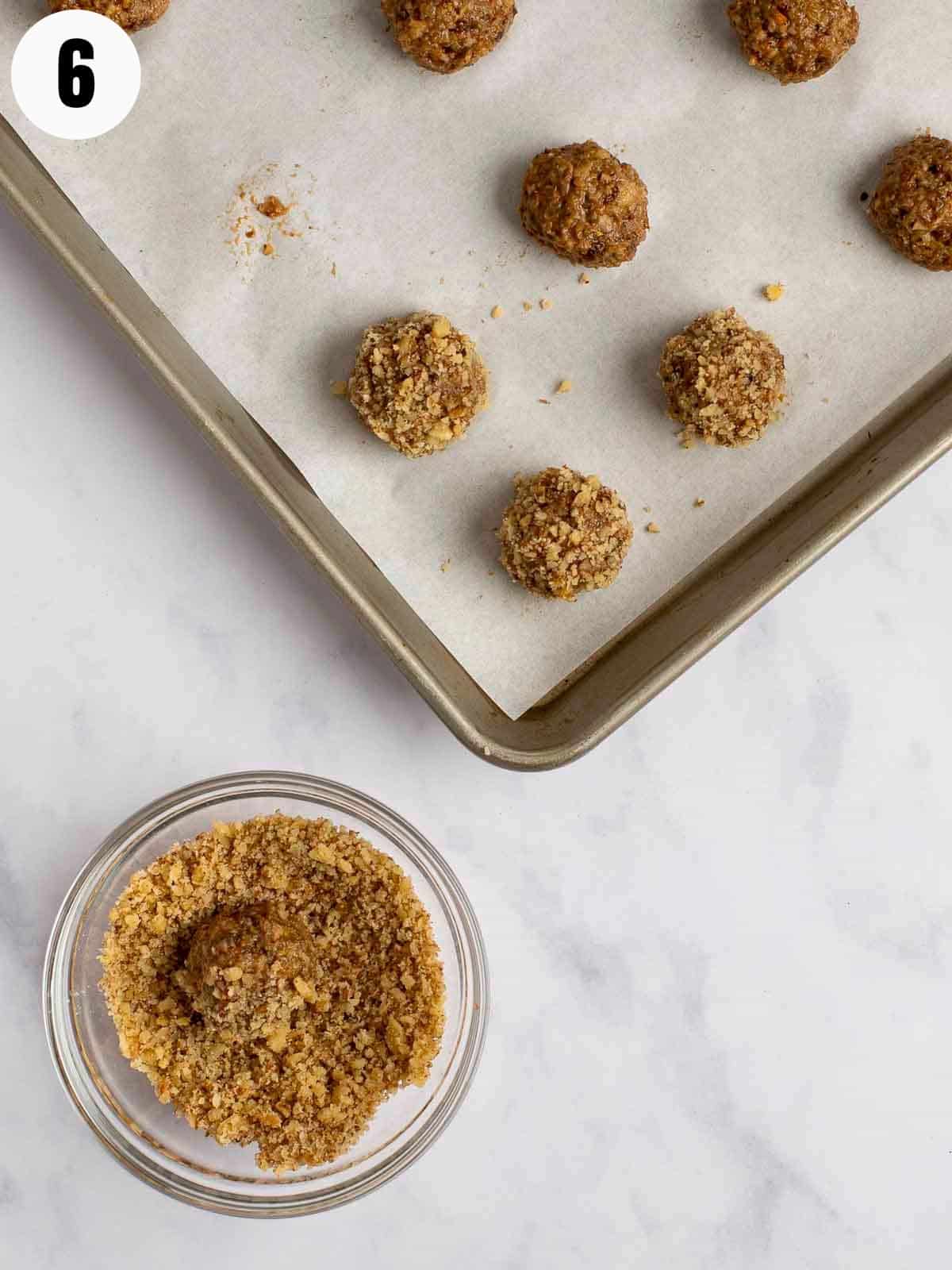
Step 6: Decorate
Roll each charoset ball in chopped nuts to decorate, and put back on the baking sheet. Place the sheet in the refrigerator to firm up for about 3 hours.
Top Tips
- Stick to the recipe! You might be tempted to improvise with this recipe, but I feel that this recipe is wonderfully balanced in flavor and texture as is. I recommend trying this recipe as written the first time. Each ingredient adds to the harmony of the recipe.
- Toast the nuts. Toast the nuts by baking them in a single layer on a baking sheet at 350°F for about 8 minutes.
- Chill. These haroset balls are best after they have chilled a little while, so don’t skip the refrigerator step.
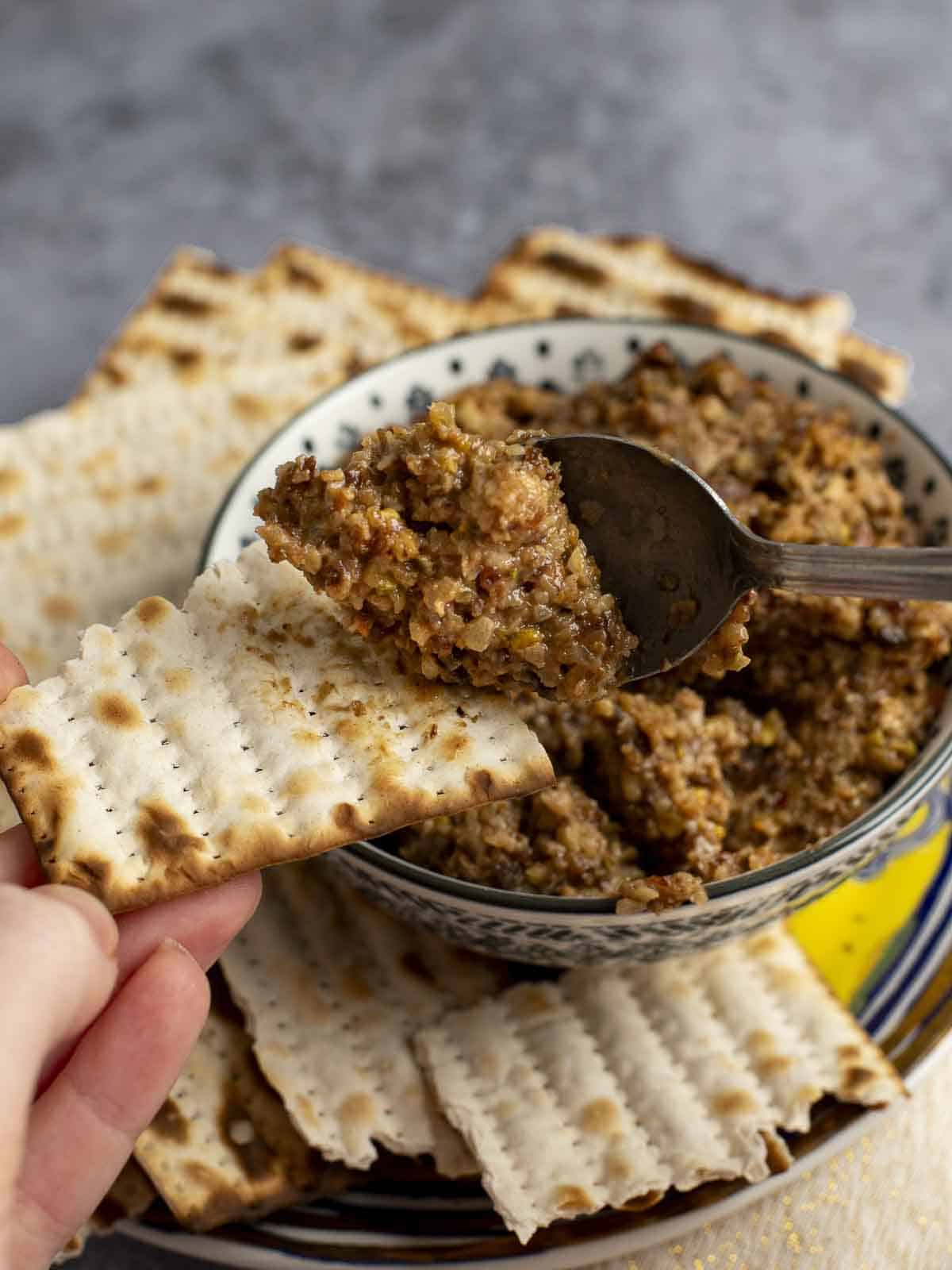
Make Ahead and Storage
Make ahead: Make this Persian charoset the day of or the day before. Store in the refrigerator in an airtight container. Take out about a half hour before serving so it can soften and come to room temperature.
How to store: Store leftover haroset in the refrigerator in an airtight container for about 2-3 days.
How to freeze: I have not tried freezing this recipe.
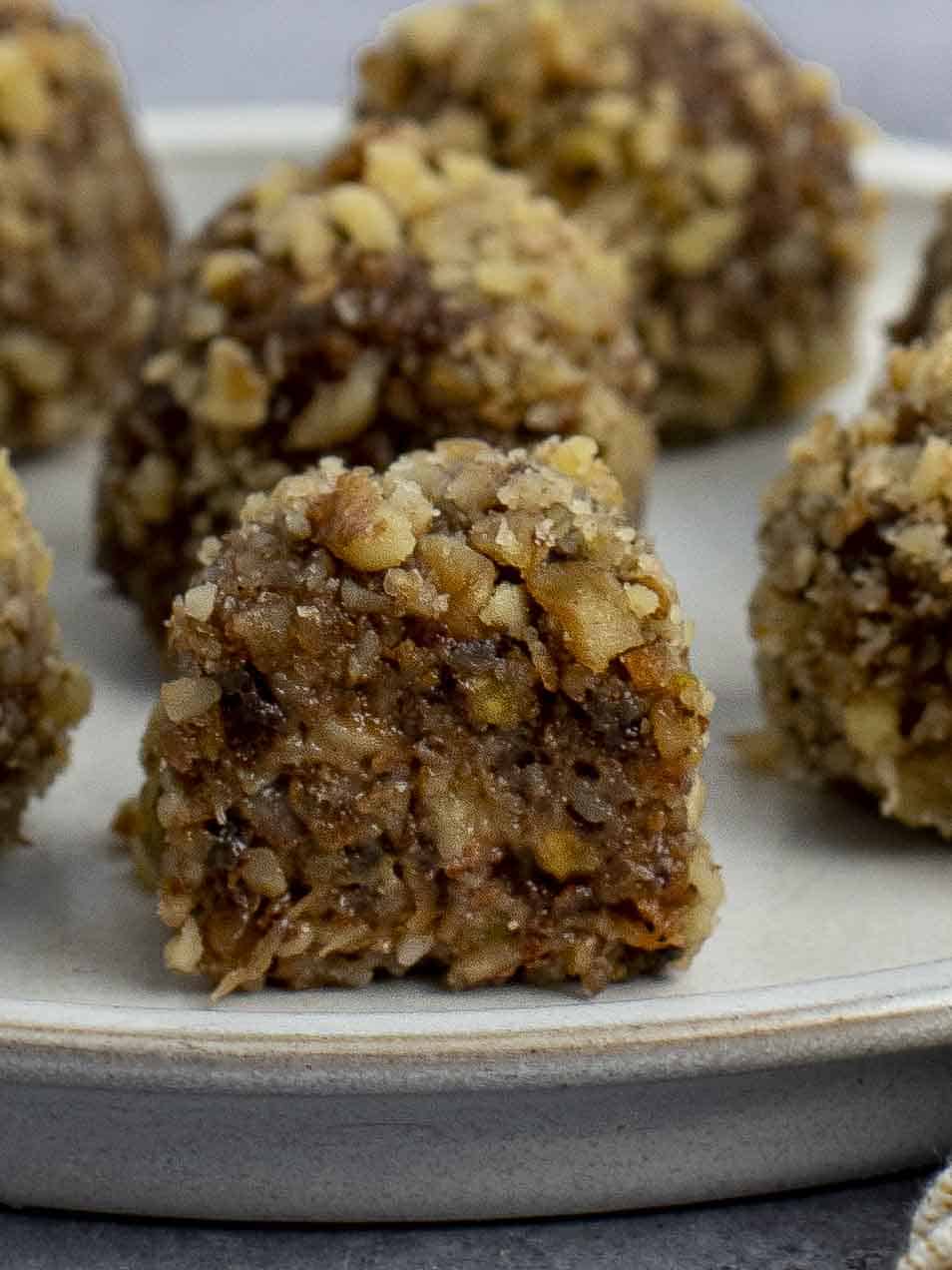
Haroset Serving Ideas
Balls vs Bowl: Serving this Persian charoset as individual balls is a traditional and convenient presentation. Alternatively, this charoset can be served in a serving bowl with each person dishing out their own portion.
Haroset Bar: At Joan Nathan’s cookbook launch event, there was a big table in the center of the party designated as a haroset tasting bar. Guests brought a variety of different charoset from around the world. It was fun to sample new types and to try to pick a favorite. The haroset bar makes a great conversation piece for a Passover party.
What to Make With Persian Charoset
Linger at Dana's Table a little longer for more free recipes.
Subscribe to my newsletter, and follow along on Facebook, Instagram, and Pinterest for the latest updates.
This post was updated in 2024 and 25 to include new photos, revised text, and more tips. The recipe has been updated to make half of the original recipe with the added instruction of rolling the charoset balls in chopped nuts.
Recipe
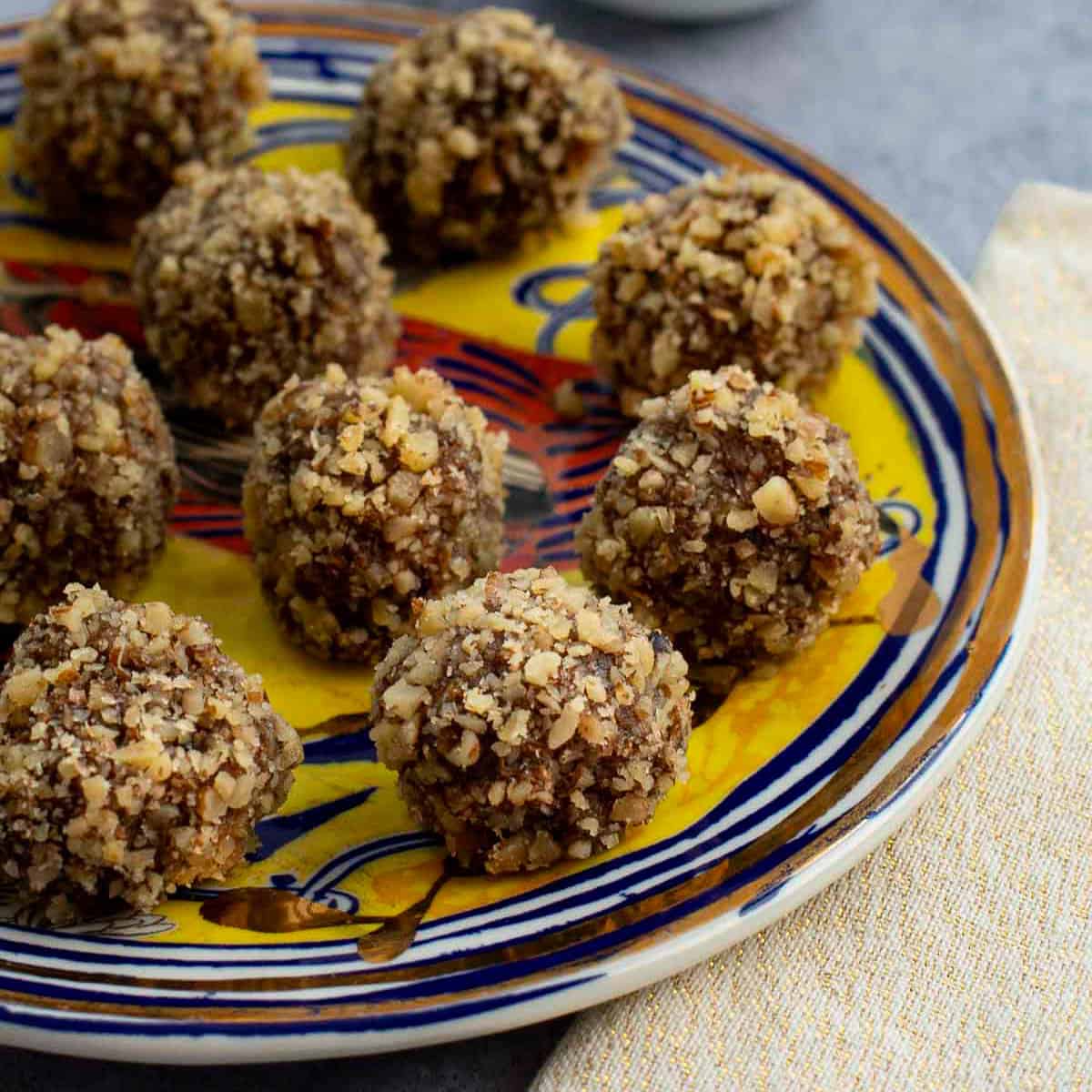
Persian Charoset Recipe with Fresh and Dried Fruit
Equipment
Ingredients
- 1 ½ cup walnuts shelled, toasted, and salted; DIVIDED, 1 cup for decorating balls and ½ cup for haroset mixture.
- ½ cup almonds blanched or raw
- ½ cup pistachios shelled, toasted, and salted
- ½ cup black raisins
- ½ cup golden raisins
- ½ cup dates pitted
- 1 teaspoon ground cinnamon
- 1 teaspoon ground cardamom
- ½ teaspoon ground ginger
- ¼ teaspoon ground nutmeg
- 1 small apple peeled, quartered, and cored
- 1 small pear peeled, quartered, and cored
- 1 medium banana peeled
- 1 tablespoon apple cider vinegar
- 2 tablespoons pomegranate juice
- 2 tablespoons sweet kosher wine
Instructions
- Prep walnut decoration: in a large food processor fitted with a metal blade, pulse 1 cup walnuts until they are in finely ground into tiny pieces, and set aside for decoration.
- Add nuts, dried fruits, spices: Combine the remaining ½ cup of the walnuts, almonds, pistachios, walnuts, black and golden raisins, dates, cinnamon, cardamom, ginger, and nutmeg. Pulse until the nuts are coarsely chopped.
- Add fresh fruit and liquids: Add the apple, pear, and banana, and pulse until coarsely chopped. Add vinegar, pomegranate juice, and wine. Pulse again, and check for consistency- the mixture should stick together in a thick paste that is lightly textured with tiny pieces, but not chunks. If needed, add another splash of any of the liquids to make a coarse paste, and pulse again. Stop the food processor before the paste is completely smooth.
- Roll the haroset balls: make the portions using a 1 tablespoon cookie scoop (or spoon), and place them on a baking sheet lined with parchment. Then lightly wet hands, and roll each one into a 1 inch round ball.
- Decorate: place ground walnuts in a bowl, and roll each haroset ball in the nuts so that each one has a light dusting of nuts.
- Chill: Place the haroset balls in the refrigerator in a single layer to firm up, about 3 hours.
- Store: Once firm, store in an airtight container. Put wax paper between layers. Store in the refrigerator for up to 2-3 days. Leave refrigerated until about a half hour before serving.
Notes
- Adapted from King Solomon’s Table by Joan Nathan. Recipe used with permission by publisher and author. Recipe halved with added direction of rolling charoset balls in chopped walnuts.
- Store leftover haroset in the refrigerator in an airtight container for about 2-3 days.
- Make the day of or the day before. Store in the refrigerator in an airtight container. Take out about a half hour before serving so it can soften and come to room temperature.
Nutrition
Nutritional Disclaimer
Nutritional information is an estimation only.

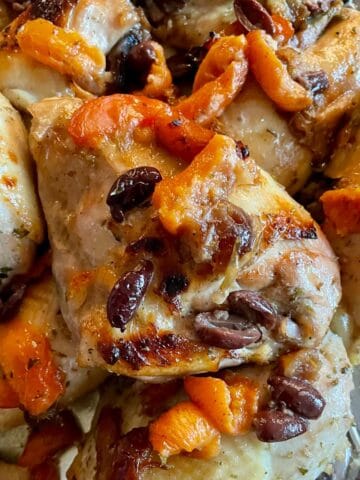
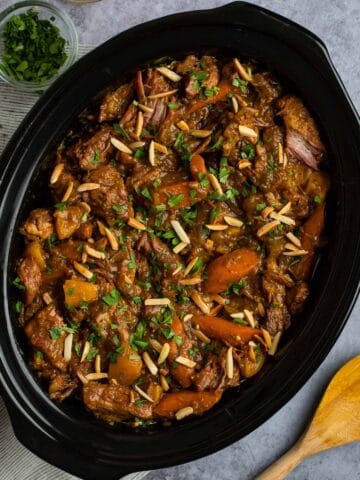
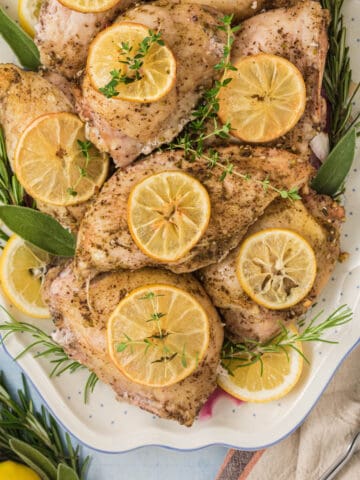
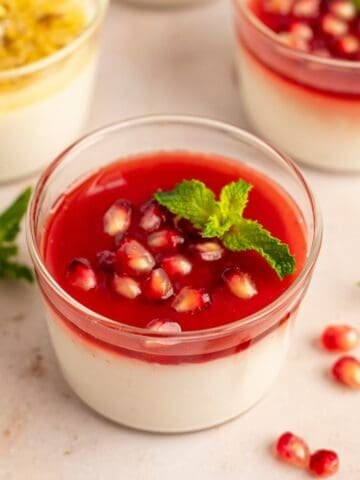
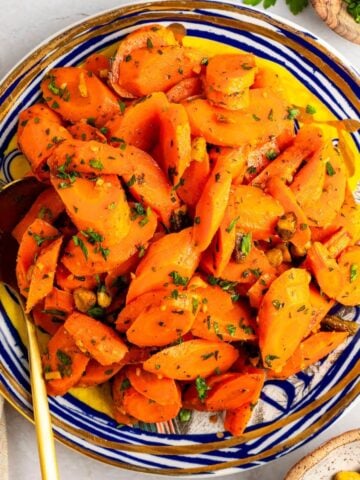
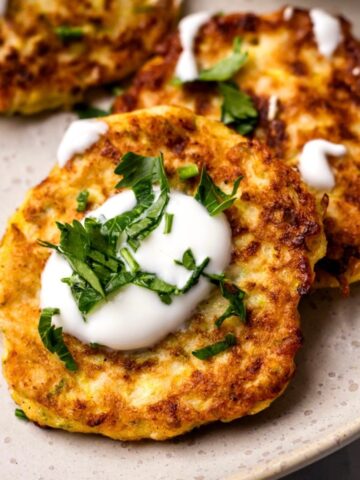
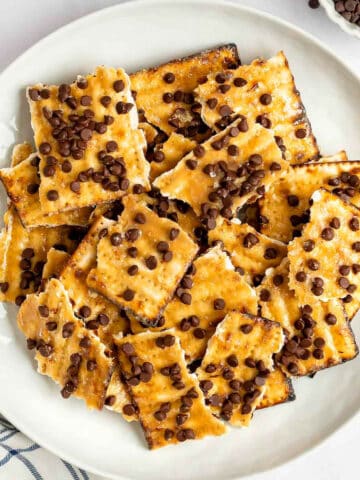
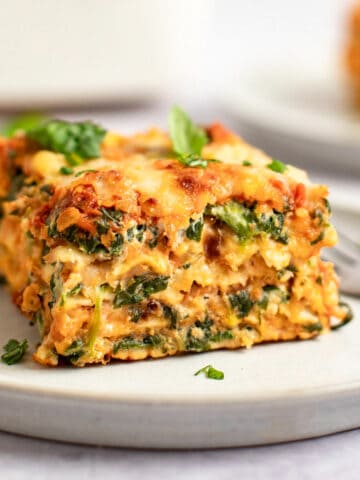
Hannah says
What a beautiful post, Dana! Joan Nathan is always a source of inspiration and it sounds like her new book is no exception. I especially enjoyed reading about Captain Phil and his appreciation for haroset and Joan Nathan! Such a small world. I like the idea of serving haroset rolled in balls for each guest. I'm making a note of that for next year. I hope you had a delicious, meaningful Passover celebration!
Dana says
Hi Hannah- thanks for your sweet comments. Happy Passover to you and your family too. It's fun sharing Passover traditions and getting new ideas to freshen things up. Definitely check out Joan's new book-- it's the best one yet, especially with the gorgeous photos. All the best, Dana
ShePaused4Thought says
You have beautifully captured the essence of this amazing book. Like yourself, I spent my entire Sunday curled up on a couch reading this intriguing book. Now off to cook from it. Great job Dana.
Dana says
Thank you so much, Cathy. I'm looking forward to hearing about what you make out of the book. The photos make everything so enticing.